Warm Filtering Electronics for SPLENDOR

Filter Box Version 4 being tested at SLAC with an SRS Model SR560 Preamplifier and Keysight E36300 Series Power Supply.
SPLENDOR
The SPLENDOR (Search for Particles of Light Dark Matter with Narrow-Gap Semiconductors) Collaboration is a small prototype dark matter experiment targeting “light dark matter” in the sub-MeV mass regime.
The two key components of the experiment are the detector, under development by collaborators at Los Alamos National Laboratory, and the amplifier, under development at SLAC National Accelerator Laboratory.
The detectors are designer narrow-gap semiconductors. Incident dark matter particles will scatter with the substrate, depositing energy in the lattice and electron structures. If an incident particle transfers great enough energy, it will ionize electrons into the conduction band. Using an external electric field, these conduction electrons will be drifted to a single point contact to be read out as charge signals. With a low-enough ionization barrier and minimized parasitic noise sources, the detectors are expected to achieve sensitivity to particle-like dark matter in the sub-MeV mass regime. Read more about ionization-type detectors here.
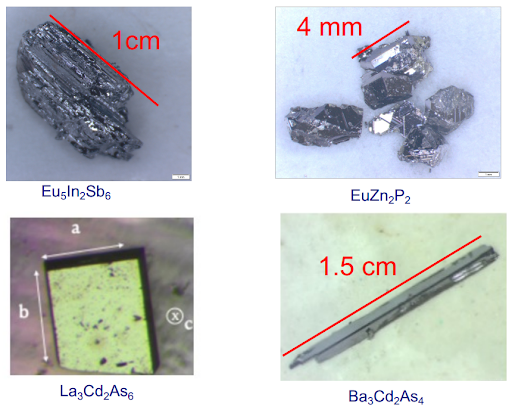 Prototype semiconductor detector substrates for SPLENDOR under development at LANL (C. Fink).
Prototype semiconductor detector substrates for SPLENDOR under development at LANL (C. Fink).
The charge signals generated by these detectors then need to be amplified before they are read out at room temperature. To do this, SLAC is developing a two-stage amplifier that utilizes custom low-capacitance High Electron Mobility Transistors (HEMTs) operable well below 4 Kelvin. The amplifier design features a decoupling stage, which disconnects the ultra low capacitance detector from the rest of the readout chain. The amplifier gain occurs on a second stage of the amplifier at a slightly warmer stage of the cryostat. The completed amplifier is projected to achieve a charge sensitivity of O(1e-), with overall pre-amplifier gain of roughly 40x.
Find our publication about the SPLENDOR two-stage HEMT amplifier published to the Journal of Low Temperature Physics here!
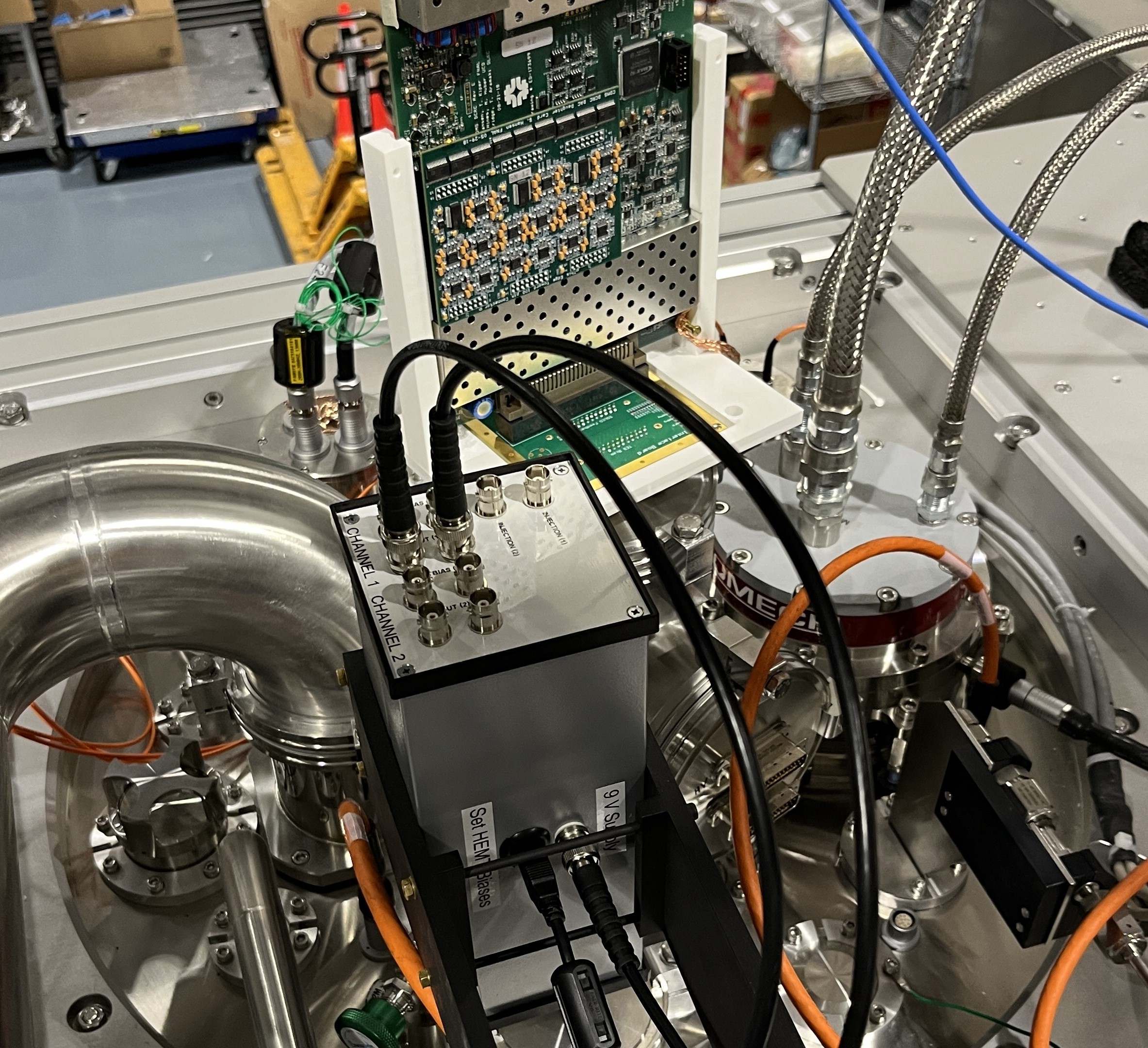 Filter Box Version 4 installed and operating on dilution refrigerator “OLAF” at SLAC.
Filter Box Version 4 installed and operating on dilution refrigerator “OLAF” at SLAC.
Room Temperature Filter Box
To bias these transistors, I have been tasked with developing a custom room-temperature filtering solution that operates in-line with the experiment. My “Filter Box” provides passive RC filtering for all transistor bias lines, integrates directly with our custom low-noise power supply, and acts as a breakout for other room-temperature instrumentation.
The current version of Filter Box provides high attenuation to any current-noise fluctuations of our power supply to provide clean DC bias currents to all transistor inputs.
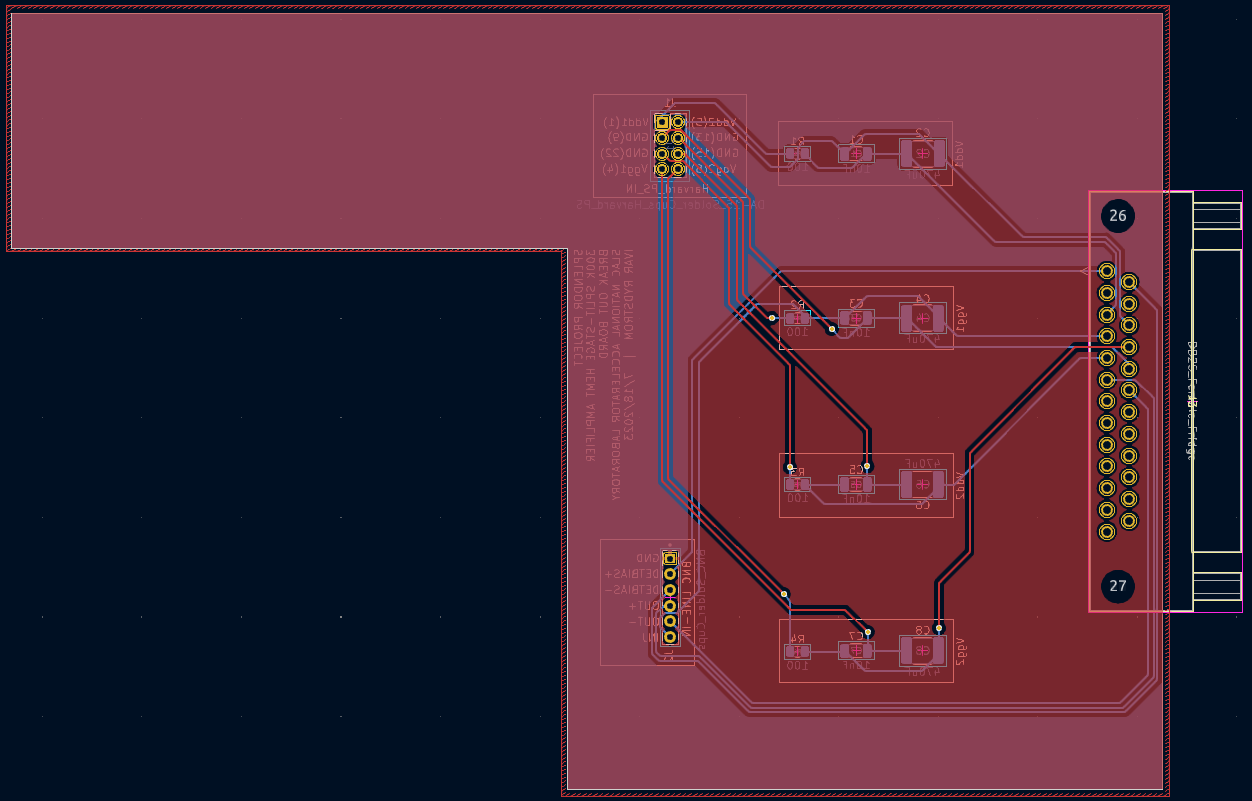 Filter Box Version 3 PCB designed in KiCad Software.
Filter Box Version 3 PCB designed in KiCad Software.
 Filter Box Version 4 PCB designed in KiCad Software.
Filter Box Version 4 PCB designed in KiCad Software.
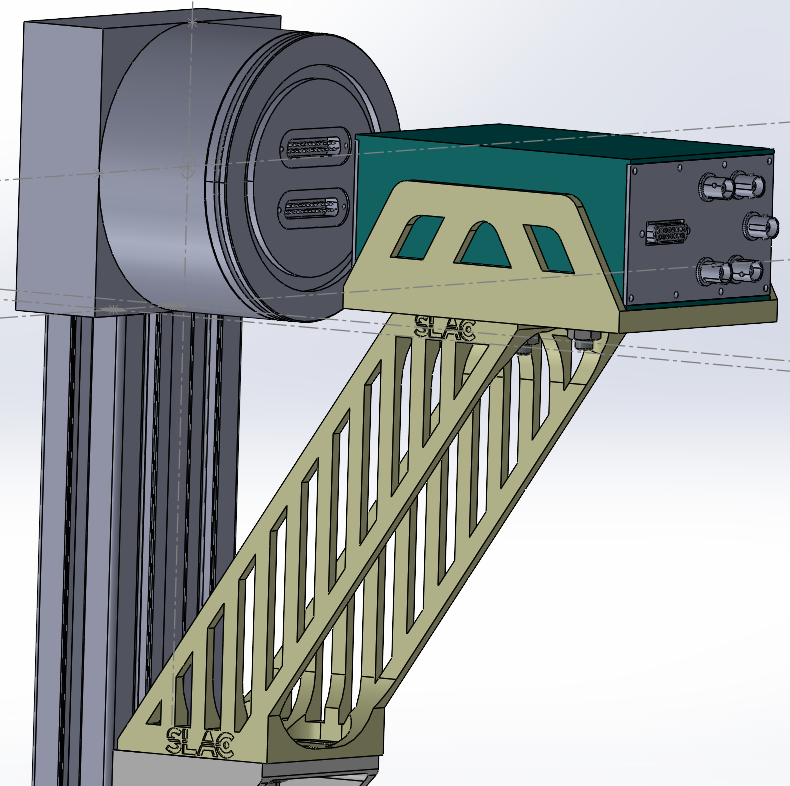 Custom designed mounting bracket solution for horizontally oriented hermetic feedthroughs. Seen configured with Filter Box V3 and a mockup cryostat.
Custom designed mounting bracket solution for horizontally oriented hermetic feedthroughs. Seen configured with Filter Box V3 and a mockup cryostat.
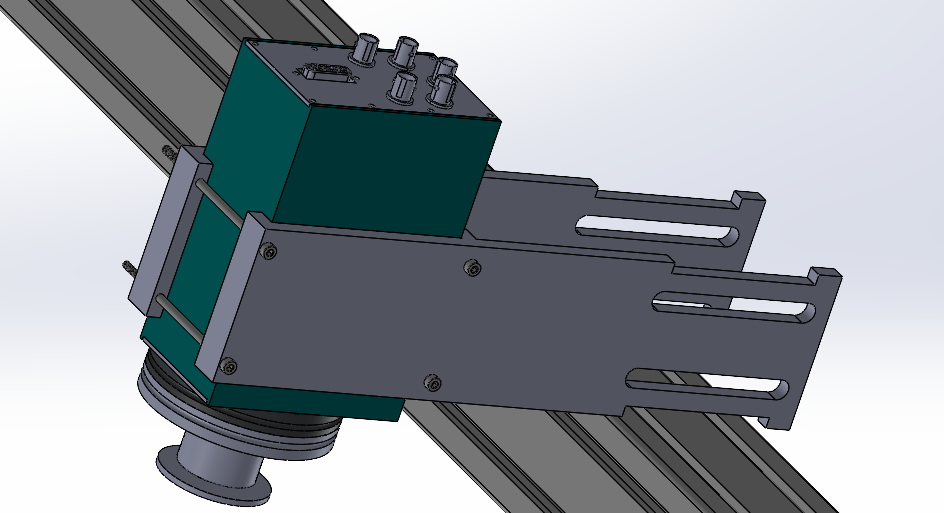 Alternative mounting bracket solution for vertically oriented hermetic feedthroughs.
Alternative mounting bracket solution for vertically oriented hermetic feedthroughs.
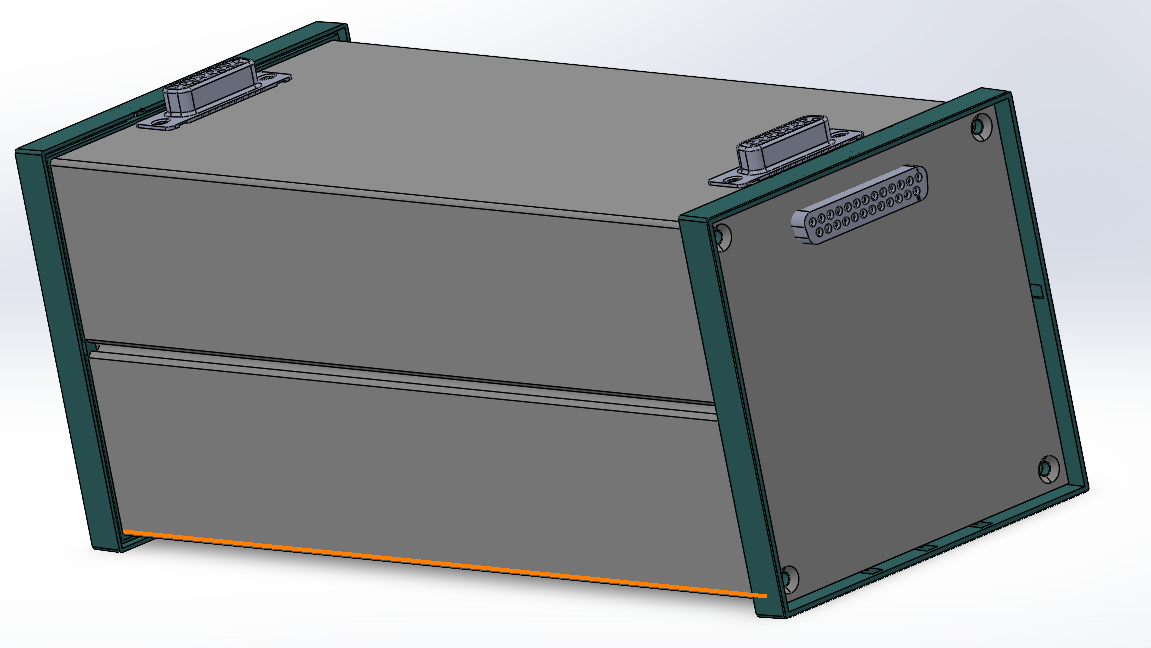 Early rendering of Filter Box Version 4 in Solidworks CAD software.
Early rendering of Filter Box Version 4 in Solidworks CAD software.